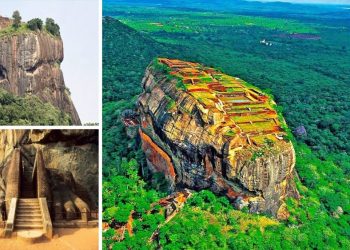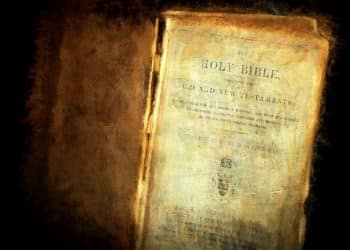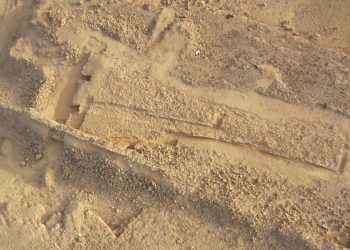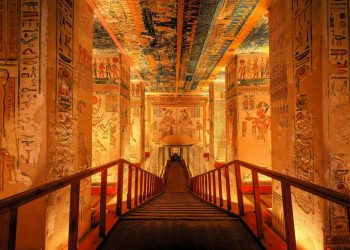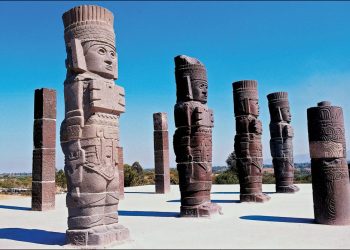What do you think the oldest, most ancient Egyptian papyrus has to tell us about the pyramids? An archeological site excavated since 2011 has yielded some of the most important archeological discoveries in the history of Egypt. At Wadi el-Jarf, it was an ancient harbor on the Red Sea shore, where boats from the Fourth Dynasty would sail to and transport numerous materials, including copper and turquoise, obtained from South-Western Parts of the Sinai peninsula.
In 2013, archeologists came across hundreds of papyri fragments that date back to the end of the reign of Pharaoh Khufu. It turned out to be the oldest ancient Egyptian papyrus, and archeologists could have never imagined the importance of the ancient texts. Found at the entrance of one of the storage galleries at Wadi el-Jarf, it was later revealed that the papyri discovered at the site were the oldest ever discovered in Egypt.
The papyri fragment detail a group of sailors and their journey across the Nile. Experts have divided the papyri into two categories of documents. The first categories relate to the commodities delivered to the workers and two logbooks that registered daily activities spanning several months. But what makes the oldest ancient Egyptian papyrus so important?
Journal of Merer
The latter would be dubbed the “Journal of Merer.” It reveals missions led under the inspector Merer, and are related to the transportation of massive blocks of limestone from the quarries of Tura, towards the Pyramid at the Giza plateau, then still under construction, some 4,500 years ago, at the opposite bank of the River Nile.
Wadi el-Jarf is considered one of the oldest known artificial harbors on the planet’s surface; the port of Wadi al-Jarf was first identified in 1832 by J. G. Wilkinson and then rediscovered in the 1950s during an archeological expedition by French researchers.
The harbor at Wadi al-Jarf dates back to the Fourth Dynasty of Egypt, to around 4,500 years ago, and researchers have discovered more than one hundred ancient anchors as well as storage jars at the site.
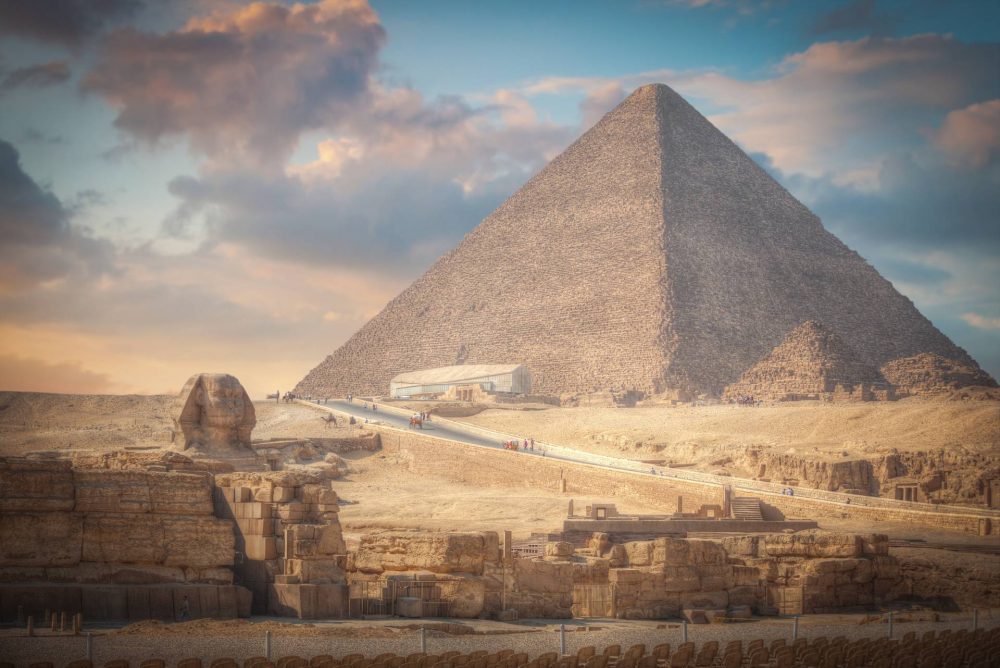
The oldest ancient Egyptian papyrus, divided into two logbooks, offer an unprecedented, continuous record of activities over a period that may have stretched up to five months, are beyond fascinating in terms of historical importance. That’s because until now, they provide unprecedented testimony, although indirectly, of the construction of one of the greatest monuments the world has ever seen, the Great Pyramid of Giza, and a wealth of other installations related to it.
At the very moment the logbooks were written, most likely by inspector Merer himself, experts believe the pyramid was being constructed in Egypt, and he was, most likely, a direct eyewitness to the construction phases of the pyramid. But despite the fact that this might very well be so, the oldest ancient Egyptian papyrus does not offer any concrete evidence to that.
Although the logbooks offer never-before-seen insight into the life of workers 4,500 years ago and evidence of how stones were transported from quarries to the Giza plateau, the ancient texts (unfortunately) do not mention the construction techniques used to build the pyramid.
Stone transport
Nonetheless, the logbooks offer important information like evidence of direct access to the plateau from Tura, thanks to massive artificial waterways, which were part of a series of large-scale terraforming projects, confirmed in recent years by archeologist Mark Lehner.
English Translation of the Wadi el-Jarf Papyri A and B —“The Logbook of Merer.” Translated by Colin Clement. Retrieved from: “Les Papyrus de la Mer Rouge i le “Journal de Merer,” Papyrus Jarf A et B. Pierre Tallet.
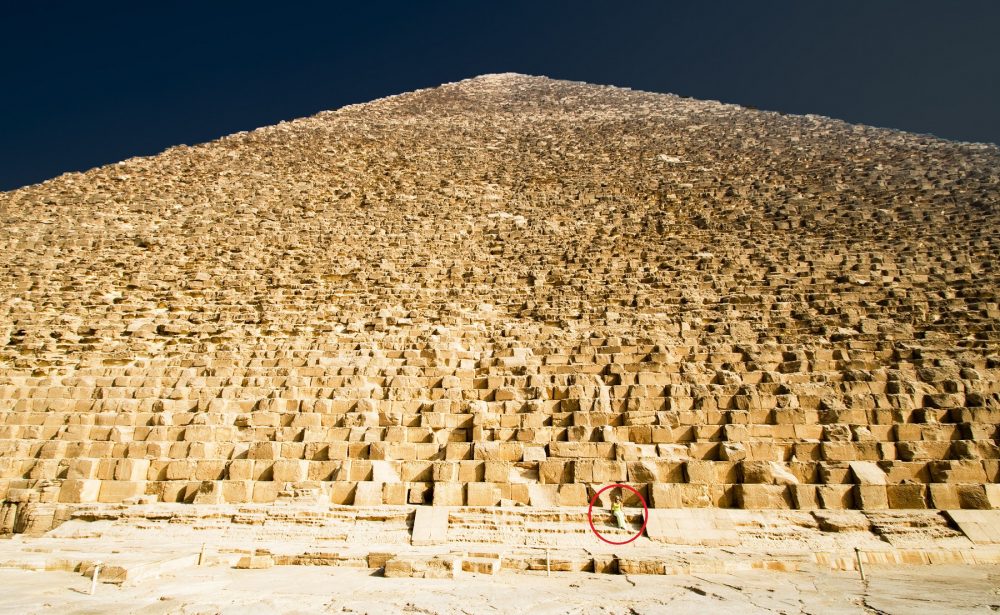
Among the most noteworthy things, the ancient journal mentions “Akhet Khufu as the Great Pyramid, the ” Horizon of Khufu”. It mentions a place called the “pool of Khufu,” which is penned down as “She Khufu,” short for “Ro-She Khufu,” which is the entrance to the pool of Khufu.”
The pool of Khufu was most likely an important administrative area near the pyramid, where the entire project was led. This may have been located on the artificial lake located in the vicinity of the mortuary temple. The ancient papyrus also mentions Ankhhaf, Khufu’s half-brother, who is believed to have played an important role in the construction process of the Great Pyramid of Giza.
The oldest Ancient Egyptian Papyrus
Papyrus A
Section AI
First day <of the month>: […] spend the day […] in […]. [Day] 2: […] spend the day […] in? […]. [Day 3: Cast off from?] the royal palace? [… sail]ing [upriver] towards Tura, spend the night there. Day [4]: Cast off from Tura, morning sail downriver towards Akhet-Khufu, spend the night. [Day] 5: Cast off from Tura in the afternoon, sail towards Akhet-Khufu. Day 6: Cast off from Akhet-Khufu and sail upriver towards Tura […]. [Jour 7]: Cast off in the morning from […] Day 8: Cast off in the morning from Tura, sail downriver towards Akhet-Khufu, spend the night there. Day 9: Cast off in the morning from Akhet-Khufu, sail upriver; spend the night. Day 10: Cast off from Tura, moor in Akhet-Khufu. Come from […]? the aper-teams?[…]
Section AII
Day 11: Inspector Merer spends the day with [his phyle in] carrying out works related to the dyke of [Ro-She] Khuf[u …] Day 12: Inspector Merer spends the day with [his phyle carrying out] works related to the dyke of Ro-She Khufu […]. Day 13: Inspector Merer spends the day with [his phyle? …] the dyke which is in Ro-She Khufu by means of 15? phyles of aper-teams. Day [14]: [Inspector] Merer spends the day [with his phyle] on the dyke [in/of Ro-She] Khu[fu…]. [Day] 15 […] in Ro-She Khufu […]. Day 16: Inspector Merer spends the day […] in Ro-She Khufu with the noble? […]. Day 17: Inspector Merer spends the day […] lifting the piles of the dy[ke …]. Day 18: Inspector Merer spends the day […] Day 19 […] Day 20 […] for the rudder? […] the aper-teams.
Papyrus B
Section B I
[Day 25]: [Inspector Merer spends the day with his phyle [h]au[ling]? st[ones in Tura South]; spends the night at Tura South [Day 26]: Inspector Merer casts off with his phyle from Tura [South], loaded with stone, for Akhet-Khufu; spends the night at She-Khufu. Day 27: sets sail from She-Khufu, sails towards Akhet-Khufu, loaded with stone, spends the night at Akhet-Khufu. Day 28: casts off from Akhet-Khufu in the morning; sails upriver <towards> Tura South. Day 29: Inspector Merer spends the day with his phyle hauling stones in Tura South; spends the night at Tura South. Day 30: Inspector Merer spends the day with his phyle hauling stones in Tura South; spends the night at Tura South.
Section B II
[First day <of the month>] the director of 6 Idjer[u] casts of for Heliopolis in a transport boat-iuat to bring us food from Heliopolis while the Elite (stp-sȝ) is in Tura. Day 2: Inspector Merer spends the day with his phyle hauling stones in Tura North; spends the night at Tura North. Day 3: Inspector Merer casts off from Tura North, sails towards Akhet-Khufu loaded with stone. [Day 4 …] the director of 6 [Idjer]u [comes back] from Heliopolis with 40 sacks-khar and a large measure-heqat of bread-beset while the Elite hauls stones in Tura North. Day 5: Inspector Merer spends the day with his phyle loading stones onto the boats-hau of the Elite in Tura North, spends the night at Tura. Day 6: Inspector Merer sets sail with a boat of the naval section (gs-dpt) of <the phyle of> Ta-ur, going downriver towards Akhet-Khufu. Spends the night at Ro-She Khufu. Day 7: sets sail in the morning towards Akhet-Khufu, sails towing <the boats> towards Tura North, spends the night at […] Day 8: sets sail from Ro-She Khufu, sails towards Tura North. Inspector Merer spends the day [with a boat?] of Ta-ur? […]. Day 9: sets sail from […] of Khufu […]. Day 10: […]
Section B III
[Day 13 …] She-[Khufu] […] spends the night at Tur]a South. [Day 14: … hauling] stones [… spends the night in] Tura South. [Day 15:] Inspector Merer [spends the day] with his [phyle] hauling stones [in Tura] South, spends the night in Tura South. [Day 16: Inspector Merer spends the day with] his phyle loading the boat-imu (?) with stone [sails …] downriver, spends the night at She-Khufu. [Day 17: casts off from She-Khufu] in the morning, sails towards Akhet-Khufu; [sails … from] Akhet-Khufu, spends the night at She-Khufu. [Day 18] […] sails […] spends the night at Tura <South>. [Day 19]: Inspector Merer] spends the day [with his phyle] hauling stones in Tura [South ?]. Day 20: [Inspector] Mer[er] spends the day with [his phyle] hauling stones in Tura South (?), loads 5 craft, spends the night at Tura.
Section B IV
Day 21: [Inspector] Merer spends the day with his [phyle] loading a transport ship-imu at Tura North, sets sail from Tura in the afternoon. Day 22: spends the night at Ro-She Khufu. In the morning, sets sail from Ro-She Khufu; sails towards Akhet-Khufu; spends the night at the Chapels of [Akhet] Khufu. Day 23: the director of 10 Hesi spends the day with his naval section in Ro-She Khufu, because a decision to cast off was taken; spends the night at Ro-She Khufu. Day 24: Inspector Merer spends the day with his phyle hauling (stones? craft?) with those who are on the register of the Elite, the aper-teams and the noble Ankhhaf, director of Ro-She Khufu. Day 25: Inspector Merer spends the day with his team hauling stones in Tura, spends the night at Tura North. [Day 26 …] sails towards […]
Section BX
Day x+1: [sails] downriver […] the bank of the point of She-Khufu. Day x+2: […] sails? from Akhet-Khufu […] Ro-She Khufu. Day x+3: [… loads?] […Tura] North. Day x+4: […] loaded with stone […] Ro-She [Khufu]. Day x+5: […] Ro-She Khufu […] sails from Akhet-Khufu; spends the night. Day x+6: [… sails …] Tura. Day x+7: [… hauling?] stones [in Tura North, spends the night at Tura North. Day x+8: [Inspector Merer] spends the day with his phyle [hauling] stones in Tura North; spends the night in Tura North. Day x+9: […] stones [… Tura] North. Day x+10: […] stones [Tu]ra North; Day x+11: [casts off?] in the afternoon […] sails? […]
Section BY
x+1 […Tura] North […] spends the night there. x+2: […] sails [… Tura] North, spends the night at Tura North. x+3 [… loads, hauls] stones […] x+4 […] spends the night there. x+5 […] with his phyle loading […] loading a craft. x+6 […] sails [… Ro-She?] Khufu […] x+7 […] with his phyle sails […] sleeps at [Ro]-She Khufu x+8 […]
Have something to add? Visit Curiosmos on Facebook. Join the discussion in our mobile Telegram group.






